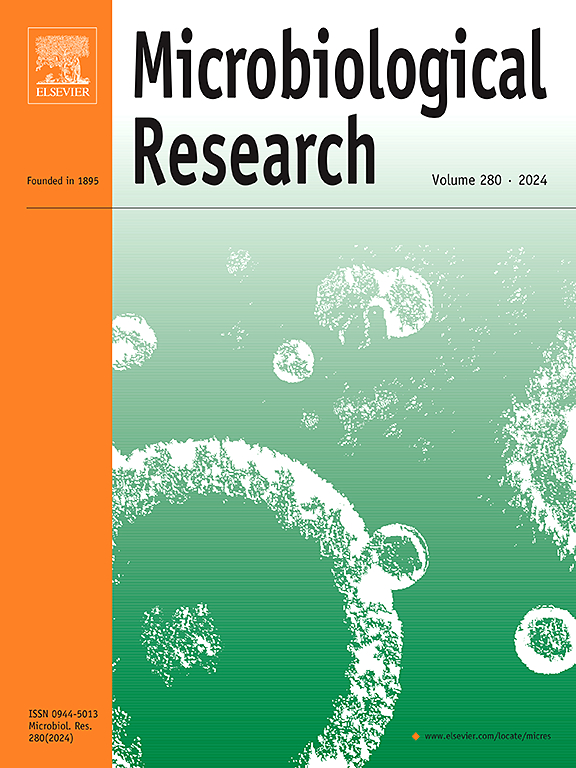Identification of ShgH as a dual histidine/glutamine transporter component essential for Streptococcus suis virulence and biofilm modulation
IF 6.9
1区 生物学
Q1 MICROBIOLOGY
引用次数: 0
Abstract
Streptococcus suis is a zoonotic pathogen that affects pigs and humans. In this study, we characterised ShgH, a predicted substrate-binding component of an ABC transporter. Immunoassays confirmed that ShgH is expressed, secreted and surface-exposed in S. suis, in agreement with its proposed transporter function. Isothermal titration calorimetry demonstrated that ShgH binds glutamine and histidine, with a higher affinity for histidine. Deletion of the shgH gene significantly impaired uptake of both radiolabelled amino acids confirming its role as part of a transporter. Functional analysis revealed that shgH deletion results in a marked reduction in virulence in a murine infection model, while host colonization remained unaffected. ShgH contributes to infection by facilitating evasion of phagocytosis and resistance to oxidative stress through impaired nutrient acquisition and reduced capsule production. In addition, ShgH regulates biofilm formation and architecture. Notably, ShgH is highly conserved among pathogenic streptococci, suggesting a broader functional relevance. Altogether, our findings identify ShgH as a dual glutamine/histidine- binding protein essential for nutrient uptake and virulence in S. suis, and a promising target for future therapeutic interventions.
ShgH作为猪链球菌毒力和生物膜调节所必需的双组氨酸/谷氨酰胺转运体组分的鉴定。
猪链球菌是一种影响猪和人的人畜共患病原体。在这项研究中,我们描述了ShgH,一种预测的ABC转运体的底物结合成分。免疫分析证实ShgH在猪链球菌中有表达、分泌和表面暴露,与所提出的转运蛋白功能一致。等温滴定量热法表明,ShgH结合谷氨酰胺和组氨酸,对组氨酸具有较高的亲和力。shgH基因的缺失显著损害了这两种放射性标记氨基酸的摄取,证实了它作为转运体的一部分的作用。功能分析显示,在小鼠感染模型中,shgH缺失导致毒力显著降低,而宿主定植不受影响。ShgH通过破坏营养获取和减少胶囊生产来促进逃避吞噬和抵抗氧化应激,从而有助于感染。此外,ShgH还调节生物膜的形成和结构。值得注意的是,ShgH在致病性链球菌中高度保守,表明其具有更广泛的功能相关性。总之,我们的研究结果表明ShgH是猪链球菌营养摄取和毒力所必需的双谷氨酰胺/组氨酸结合蛋白,是未来治疗干预的一个有希望的靶点。
本文章由计算机程序翻译,如有差异,请以英文原文为准。
求助全文
约1分钟内获得全文
求助全文
来源期刊

Microbiological research
生物-微生物学
CiteScore
10.90
自引率
6.00%
发文量
249
审稿时长
29 days
期刊介绍:
Microbiological Research is devoted to publishing reports on prokaryotic and eukaryotic microorganisms such as yeasts, fungi, bacteria, archaea, and protozoa. Research on interactions between pathogenic microorganisms and their environment or hosts are also covered.
 求助内容:
求助内容: 应助结果提醒方式:
应助结果提醒方式:


